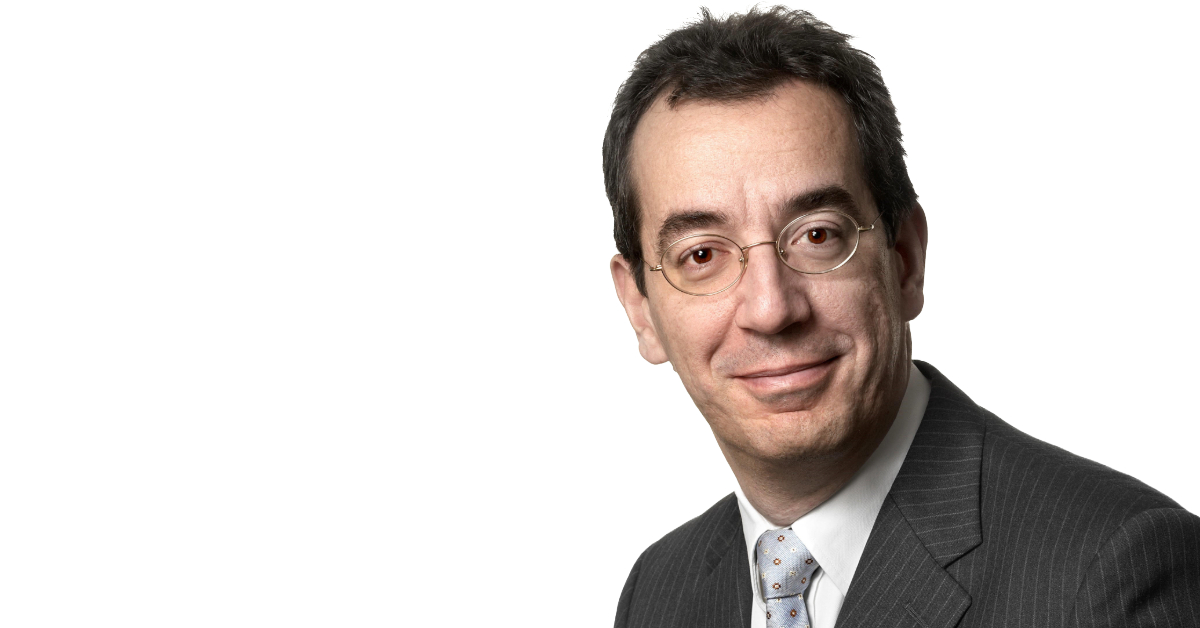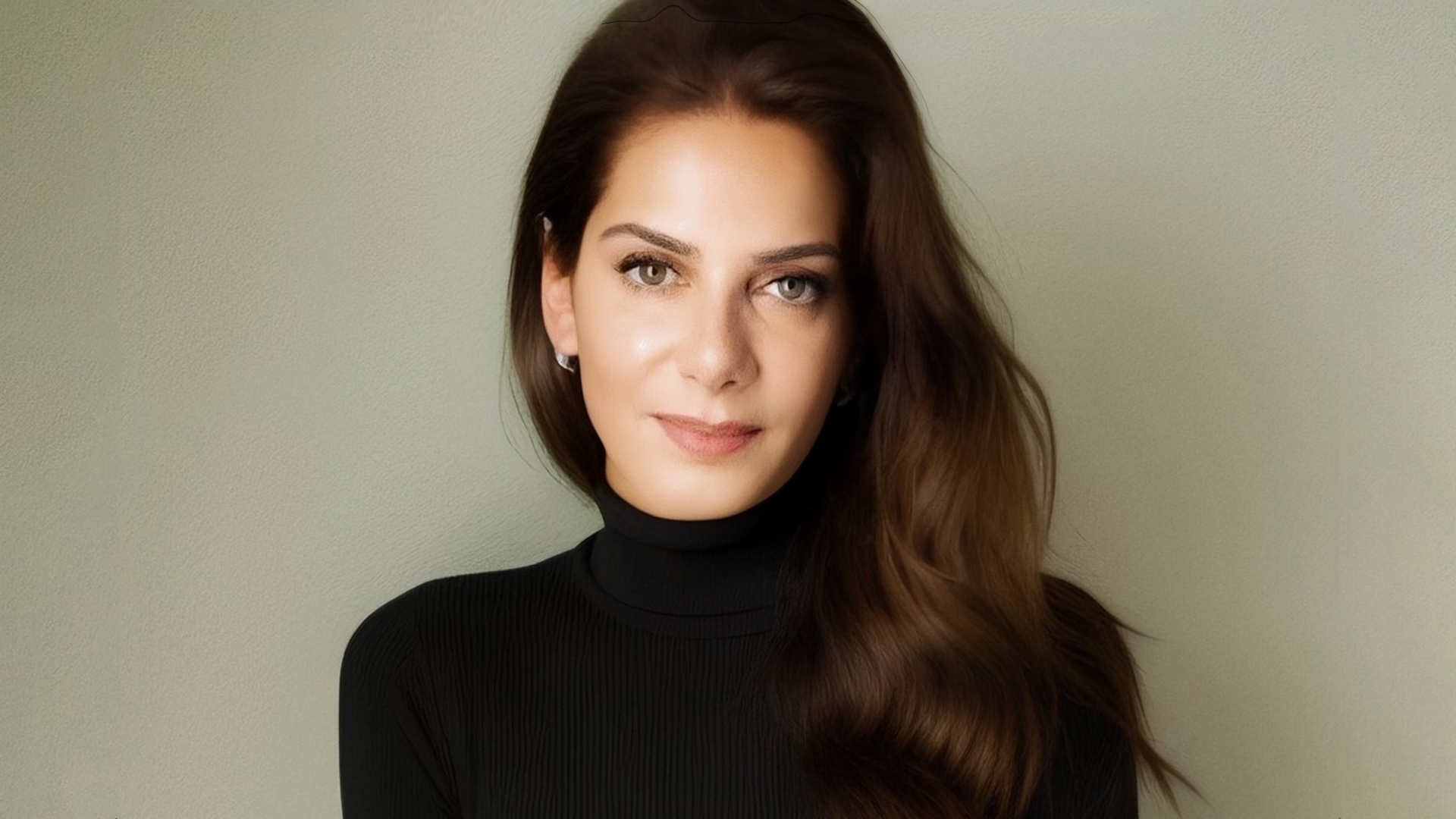Thierry Andretta, CEO of Buccellati, explains why the Italian heritage brand is well positioned for the next phase of global luxury consumption

Thierry Andretta, CEO of Buccellati, explains why the Italian heritage brand is well positioned for the next phase of global luxury consumption
Thierry Andretta (Image: Valentin Flauraud, Reuters)
Thierry Andretta, CEO of Buccellati, explains why the Italian heritage brand is well positioned for the next phase of global luxury consumption
“Luxury still exists and will continue to exist forever,” believes Thierry Andretta, the current CEO of Buccellati, who more-than-doubled revenue at Lanvin during his four year tenure. “Though it’s definitely moving towards individuality,” he continues, “the industry is starting to shift back to its origins, where clients would have items made especially for them.”
For such reasons, Buccellati is excellently positioned. The Italian heritage brand has as-yet eschewed red carpet placement in favour of creating made-to-order pieces that can retail beyond the $1 million mark. Most recently it unveiled a bespoke watch program, which draws heavily on precious stones and high jewellery aesthetics, for which prices begin at $120,000.
Thierry Andretta was appointed CEO in July 2013, roughly four months after Italian private equity fund Clessidra took a majority stake in the family owned jeweler. In February 2014 Lucrezia Buccellati – a fourth generation family member – joined her father Andrea to lead design and creative direction.
This new management team will lead Buccellati into modernity and new markets, as the brand itself undergoes a refresh during 2014. We spoke with Thierry Andretta about his vision for the Buccellati of the future.
“ Luxury will continue to exist forever, but it’s moving towards individuality ”
How do you feel about the concept of luxury in 2014?
It’s moving towards individuality. The industry is starting to shift back to the origins of luxury, where clients would order particular objects or have items made especially for them. Especially with jewellery, people used to go into our stores and ask for a gift for their wife or fiancé or their family – something personal.
And then it was a kind of dialogue where with your jeweller you would choose your stone or the setting and you would work together to capture a feeling. And of course you expect the DNA and the values of the brand but you have the opportunity to work towards individuality within that framework. If the luxury industry continues to move in this direction, I think that is a good thing.

From the Romanza Collection of engagement rings
How have some of these ideas influenced your rebranding strategy at Buccellati?
Buccellati is a brand already in this world, so we will continue to focus on luxury individuality. Already 70% of our jewellery is one of a kind and 30% of our production is done by unit – we really don’t have any products that are industrially made. In certain cases we will duplicate something, for example a ring as you need several sizes.
Our rebranding keeps consideration of this because we want to stay like this. We think that luxury is moving closer to our genetic course in general but at the same time, we want to offer a more affordable Buccellati product. But I want to say that this doesn’t mean cheap at all.
What we have decided to do is to keep the genetic code of the house but to bring in products that are particularly relevant to the present. We will continue to preserve the quality, the craftsmanship and focus on one-of-a-kind pieces. But we also want to push forward in terms of what products can be considered ‘Buccellati’.
We are also looking to improve the ratio between quality and price to give our customers more value, and to have products in store that are immediately available. The difference before was that the products you would find in the stores had to be reproduced for each client in their size, which can take three to five months.
Now we have worked to identify our most iconic products and ensure they are available in stores with a wider size range, so customers can take our products home immediately. The quality and authenticity of our offering will remain the same, but clients won’t have to wait so long for what we consider to be our heritage products.
“ We want to push forward in terms of what products can be considered Buccellati ”
What kind of products will lead Buccellati into the near future?
Currently watches represent around 20% of our business. Jewellery still leads at 70% with silverware and homewares around 10%. I think there is a big opportunity with the watch business, especially with our bespoke program (Autore), which brings us closer to the jewellery world in that it truly is 100% made for the customer.
Silver will also grow but in my opinion more than half of our sales will always come from jewellery. And then this year we debuted the Unica collection for iPad and iPhone, which is a completely new offer for fine jewellery houses and I think we are one of a small few going into this category.
But I also think that we need to approach the market in more than one way. There are a lot of very wealthy people these days that are very young and want different things to their parents. And I want to look forward, at products that don’t yet exist and we saw immediately a gap when it came to truly special consumer electronics.
Almost everyone these days has an iPhone or a Blackberry or a Samsung or some kind of smartphone, and there is a customer base that wants to have this technology with the maximum level of luxury. At the time there was a lack of offerings but we saw a definite opportunity for a niche market at a high price position.
What is interesting these days is that consumers really want to show what they have and sometimes it is not a pair of earrings, instead it could be iPhone. But this niche is also really related to geographical markets, in the sense that it is safer to have these products in some cities that it is in others. Take for example using this product on the metro in Paris versus a nice restaurant in Tokyo.
But we have been pleased to see that our distributors and stores are confident that there are clients for these types of products in various markets, who will be comfortable with the price position

Unica iPhone Case
Traditionally product for men has dominated the timepiece offering, whereas historically Buccellati watches have focused more on product for women. Do you see an opportunity in growing the men’s part of the business?
Absolutely and specifically within this bespoke timepiece project. In this project we are approaching the world of bespoke watches from a high jewellery position, so it’s different to haute horlogerie or complications.
What is inside the watch – from a mechanical perspective – is extremely important but it isn’t our business, it isn’t our DNA. This is why we give the client the opportunity to select the best mechanics from the best watchmaking brands, but I don’t want to be a manufacturer of mechanical watch movements.
Instead we want to offer men the individuality of the high jewellery approach, which is true bespoke. Normally with the watch industry now, they talk about limited edition, they talk about customization, but this is not a real bespoke service. The customer still has to build a product within an existing framework of design and materials.
Traditionally bespoke for men in watches is all about the technical. And for ladies, it is more about customization – starting with jewellery and putting the watch inside. So we decided to create a service for 100% bespoke high jewellery watches and build a new approach in growing our presence within men’s categories.
“ We are approaching the world of bespoke watches from a high jewellery position ”
For an independent brand it struck me that you have a lot of monobrand boutiques and a very strong presence in the United States. Going forward what will be your distribution strategy?
It will vary from zone to zone but we consider the Middle East to be a very important market for us, but we also think the best way to approach this market is with the best potential partner. For us the really international place in the Middle East is Dubai. In Dubai you can open a directly owned store because the crowd is partly local but also international.
In my experience you have a lot of people from across the Middle East in Dubai, but also a lot from Asia, from the ex-Russian republic and from certain parts of the UAE. So you can open directly because it’s a really international place to shop.
Other Middle Eastern markets are much more local, with less tourist traffic. In that case I think it is better to have a local partner who knows very well the potential customers and which products and services will work best, as you don’t have these global consumers driving your sales. A partner will help you navigate communications, advertising, local knowledge and all these kinds of things.
So this will be our approach to begin with in the Middle East. We will do the same in the ex-Russian republic because again, consumption is less driven by an international audience and you need that local perspective.
Our philosophy is to open directly where there is an international crowd, an international business opportunity but when it’s becoming more local we prefer to have a really good local partner. China is obviously interesting for us but we are not ready yet.
We have a few wholesale customers in China but really we want to open Hong Kong directly and Mainland China will be the second phase. We still consider Hong Kong to be the real window for the Chinese market, but still it is very expensive to open.

From the Autore collection of bespoke watches
On that note I have to ask, what are your personal feelings towards a slowdown in China?
I think we are now definitely encountering a bad attitude towards gifting and this part of the market is suffering more. A slowdown in China is not yet affecting us because we are just starting there. I think we will grow by triple-digits in China but when you start from one or two pieces, triple digit growth is easy.
But overall, China is in a transitional phase. If you think about 20 years ago or 15 years ago Russian consumers were only logo products – Vuitton logo, Prada logo, Gucci logo, every brand with a logo. Today Russia is a market that is still buying brands, but they are really buying the top part of the collection – the exotic skins, the bespoke pieces.
In my opinion China is also at the beginning of this phase. Chinese consumers are moving towards buying less quantity or even switching from one brand to the other, depending on the mass perception of the brand. They are moving away from conspicuous consumption.
On the other hand we have to understand that Chinese consumers purchase many luxury goods outside of their home market, because there they have access to tax free shopping and they also have generally better price.
And lastly, when they buy outside of China they are not worried about the authenticity of the product, whereas in China they are asking themselves if what they are buying is real. So I think we really need to consider all these factors when we think about how the Chinese market is performing.
“ There is super growth happening right now in the United States. Europe is the most conservative. ”
So which areas are currently growing?
There is super growth happening right now in the United States. It is a mature market but it becoming one again a very strong business, which for us is mostly local consumers and not tourists. Europe is the most conservative because of the economic situation.
As the world becomes more digital, is there a point where you think e-commerce could be appropriate for Buccellati?
I think that a really well executed website will be extremely important. I think eCommerce could be specifically interesting for our silverware and flatware business, as the more classical part of the collection tends to work as a business of replacement. People have a heritage with a specific product and they will continue to re-order.
For the high jewellery, online will be more of a compromise system because at the end of the day you have to fall in love with the piece. It will be extremely important to have super high-definition images and make the products look very appealing online, but still daring the client to come into the store and touch.

Finally, under your relatively new leadership, how will you measure success at Buccellati?
Success for Buccellati is to continue to do what the company has done for the past 100 years, what the family has done for over 200 years. To really keep consistence with our DNA, with this very high level of quality and craftsmanship at the top level. To never compromise on quality and continue to offer to our customer a one-of-a-kind experience.
If you are coming to Buccellati it is because you appreciate the values of the brand but you are looking for something completely connected to your individuality. It is an interpretation. And we want to continue to be this way because we think that the world is moving this way in terms of luxury. Essentially, it is a really great moment for us.
For more in our series of conversations with Luxury Leaders, please see our most recent editions as follows:
– In Conversation With Thierry Stern, President, Patek Philippe
– In Conversation With Paul James, Global Brand Leader, Starwood Luxury Hotels
– In Conversation With Michele Sofisti, CEO, Sowind Group










